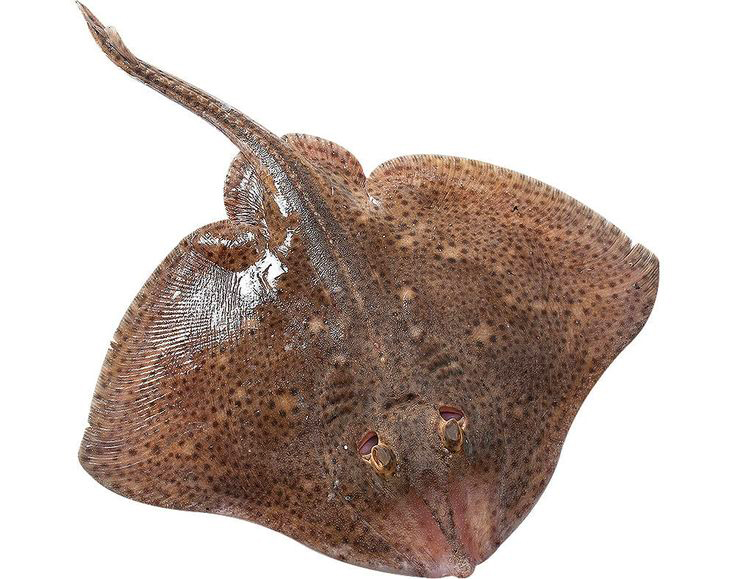
Raja clavata (Linnaeus, 1758)
Rajidae (RJC)EN - Thornback ray
PT - Raia-Lenga
FR - Raie bouclée
ES - Raya de clavos
PT - Raia-Lenga
FR - Raie bouclée
ES - Raya de clavos

Scientific information in collaboration with Ana Magalhães FerreiraMarine biologist specializing in fisheries biology, biological sampling, taxonomy and marine biodiversity, sclerochronology, GIS.
︎︎︎ 139 cm
︎ 20 - 700 m
︎︎︎ 15 years
︎ Solitary and nocturnal
︎ Rocks
︎ Crustaceans, Fishes and Molluscs
︎ Trawl and Gillnet
Near Threatened (NT) means it has been evaluated against the criteria but does not qualify for Critically Endangered, Endangered or Vulnerable now, but is close to qualifying for or is likely to qualify for a threatened category in the near future.
- In the northwest Atlantic, including Portugal, the ray Raja clavata is one of the most abundant and most commercially important species.
- Rays are elasmobranchs, a subclass of cartilaginous fish to which sharks also belong.
- Like sharks, rays have special sensors with electroreceptor structures (Lorenzini ampullae) that capture the electrical signals emitted by their prey.
- It is a solitary species, with nocturnal habits, fertilization is internal and it is possible to distinguish externally the males that have a copulatory organ called claspers (as in the spotted dogfish).
- Females are larger than males and spawning occurs over a wide period of time as females can only encapsulate two eggs at a time (mermaid purses).
- Young rays are very autonomous from birth, in most species they are able to swim and feed themselves, completely dispensing with the care of their parents.
- Experts estimate that there are about 220 different species of rays in the world's oceans, lakes and freshwater rivers.
- In Portugal there are 10 species of ray and these represent an important fraction of elasmobranch catches.
- In 2019, a team from the Institute of Paleontology at the University of Vienna discovered a stingray fossil that is more than 50 million years old. Other molecular data suggested that modern rays diverged from a sister group in the Late Jurassic, about 150 million years ago.
- Although they are often grouped together in the same category, rays and mantas are actually different. A manta's mouth is located along the front edge of its body, while a ray's is on the lower part of its body. Manta rays also do not have a stinger or tail barbs, and live in the open sea, not on the sea floor like rays.
- The IUCN Red List of Threatened Species lists at least 26 ray species as Endangered or Critically Endangered. Most species are little known and have decreasing populations, complicating conservation efforts.
-
Until recently, there was no specific discrimination of landings; currently, the European Union has established global total allowable catch values (TACs) for rays for each of its member states.
Spawning February to September
Type Oviparous
Female Maturation 70 cm
Male Maturation 60 cm
Adults late summer
Fecundity 60 to 150 eggs
Incubation period 4 to 5 months
Length at hatching 110 to 137 mm
Rectangular corneal capsule
Minimum capture size 52 cm
